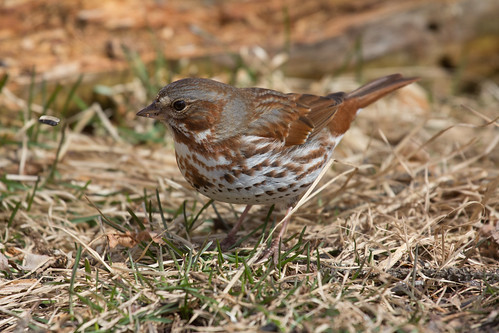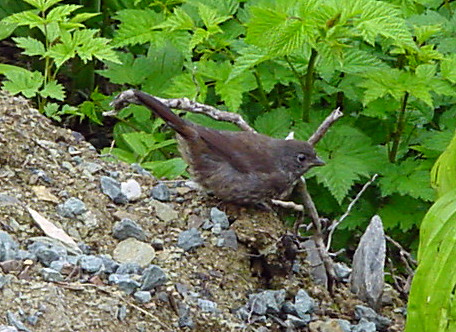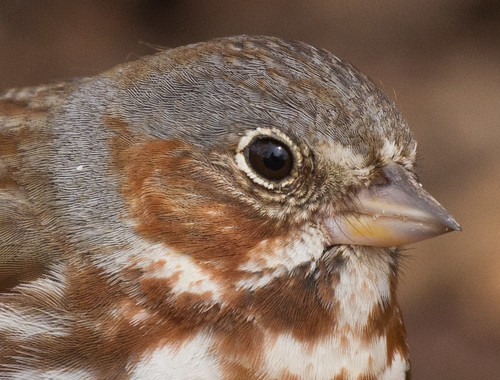 |
 |
John James Audubon was the first European to find their nesting grounds, on his expedition to Labrador. The birds up there were part of the same eastern population that winters in the East, with a lot of foxy red in their plumage. Eastern Fox Sparrows are even easy to identify even as they fly away from us thanks to their bright rusty tail. But Audubon had no idea that there are three other color forms, far less rusty. Indeed, the Fox Sparrow is one of the most geographically variable of all songbirds. Fox Sparrows from Alaska are very dark, appearing to be an entirely different species from the eastern population that migrates through Minnesota and Wisconsin. My husband and I saw some when we were walking trails near the Mendenhall Glacier in Juneau, Alaska in 2001. Fox Sparrows are rather shy, but if you’re quiet and slow, you can often creep up on them without alarming them, so I managed to get a few photos with my inexpensive point-and-shoot camera, which had only a 2x zoom. I was thrilled to see this bird, but left feeling very lucky that the Fox Sparrows on our side of the continent are so much more colorful.
 |
| Fox Sparrow on the Mendenhall Glacier |
I stayed in Port Wing, Wisconsin, quite a bit this fall, and spent a lot of time watching my mother-in-law’s sparrows. As many as ten Fox Sparrows were present many days in mid-October. Some of them were aggressive toward the other sparrows, making loud chuck calls and darting toward them. The other sparrows don’t seem to take umbrage at this, nor to take it as a serious threat. They merely step aside and go back to feeding.
During the peak of sparrow migration, 50 or 60 sparrows gathered at her feeding station, all intent on building up their fat to continue their migration. White-throated Sparrows make up the core population in September, with Dark-eyed Juncoes taking over in October. A few White-crowned and Harris’s Sparrows as well as Fox Sparrows can join them. I doubt if these birds migrate together or associate beyond the feeding station, but they probably do recognize the assortment of sounds by birds enjoying good dining, and join in.
 |
| (Taken in autumn 2014 in my own yard) |
Sparrow numbers are dwindling now, but one or two Fox Sparrows may linger through the Christmas Bird Count. One year three Fox Sparrows remained in my yard through the end of February. I felt lucky. The birds got a head start on migration that spring, so perhaps they felt lucky, too. Ornithologists haven’t teased out a lot of basic information about Fox Sparrows yet—how the birds feel about luck may never be known.
